Best Of 2020: Our Favorite Stories Of A Not Favorable Year
Happy New Year’s Eve. We’ve almost made it through one of the most tragic, ironic and downright weird years of our existence. So at midnight tonight we can finally say, be gone, 2020. Still, in the pages of our magazine we had a few moments, whether it was those we profiled or the writers who talked about their own adventures in the Golden State. So here they are, the best stories of 2020:
In February, Todd Kline, who usually provides visual examples of his Adventures of Todd Kline feature, penned an informative piece about bass spawn tips.
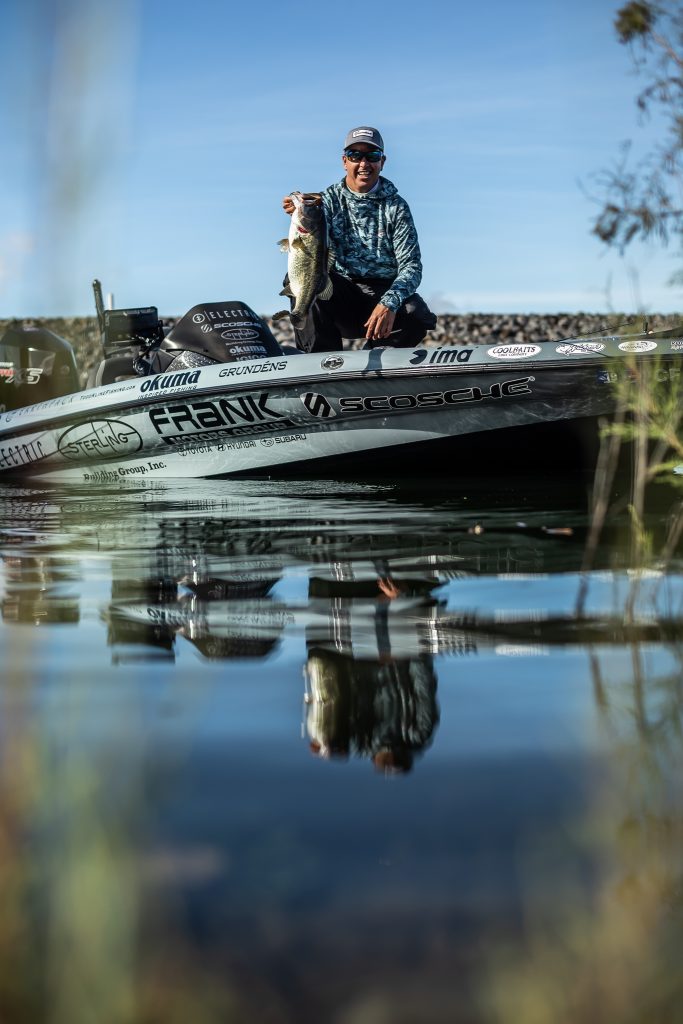
When fish are ready to spawn, they’ll move into the shallows and are ready for their love making. First and foremost, make sure you have a pair of premium polarized sunglasses to spot fish. I prefer to use the Electric Tech One XL with the bronze Polarized-Plus lenses. These are great year-round to see not only bass but also the structure as well to make that perfect cast.
Usually you’ll see the males first as the females are a bit more boat-shy and skittish. Male bass are going to be cursing around shallow water either looking for a female or they will be the one locked on the bed protecting. For the most part they are very aggressive and easy to catch. The females will be much harder to locate and catch.
John Heil of the U.S. Fish and Wildlife Service explained the athletic prowess of summer steelhead:
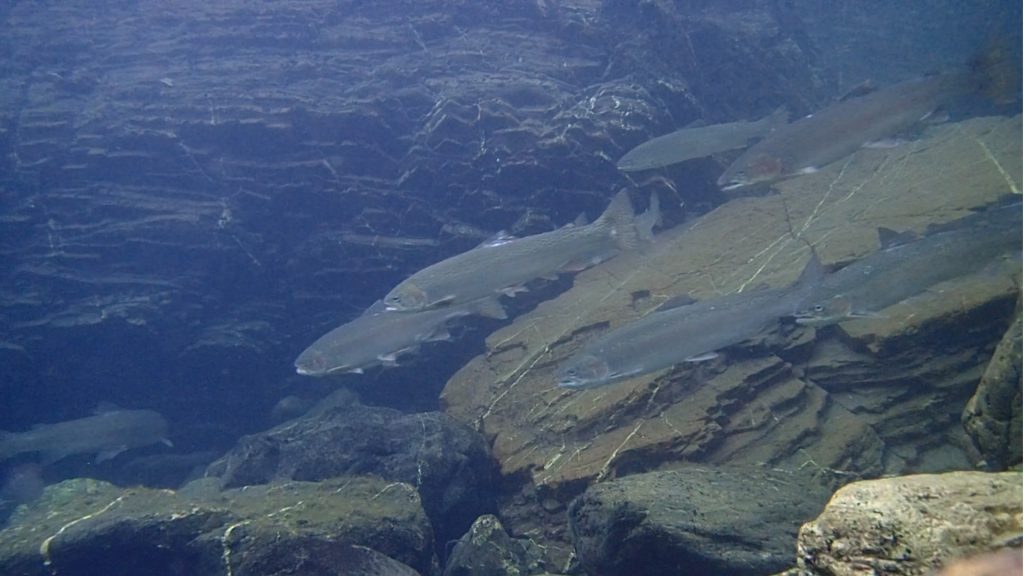
“Steelhead are one of the most iconic fish species on the Pacific coast of the United States,” said U.S. Fish and Wildlife Service biologist Damon Goodman. “One of the things they are most well-known for is their athleticism. They are the top athletes of all salmonids. They can leap up and over waterfalls and swim through extreme rapids to access their habitats.”
And among athletes, summer-run steelhead are equivalent to Olympians, per Goodman, who is now the chair of the Native Fishes Committee for the California Nevada Chapter of the American Fisheries Society.
“In many ways summer steelhead are the most extreme athletes of the steelhead, allowing them to get up to habitats higher in the watersheds like the Middle Fork Eel River in the Yolla Bolly Wilderness, their southernmost stronghold where they have unimpeded access,” said Goodman. “Having clear routes of passage to be able to make it up and express their life history is critical to their survival.”
Also in March, Lance Sawa, raised in Southern California but now raising his own family as an expat in Japan, felt like a kid again when he attended a sportsman show in Japan after growing up attending similar California shows with his dad.
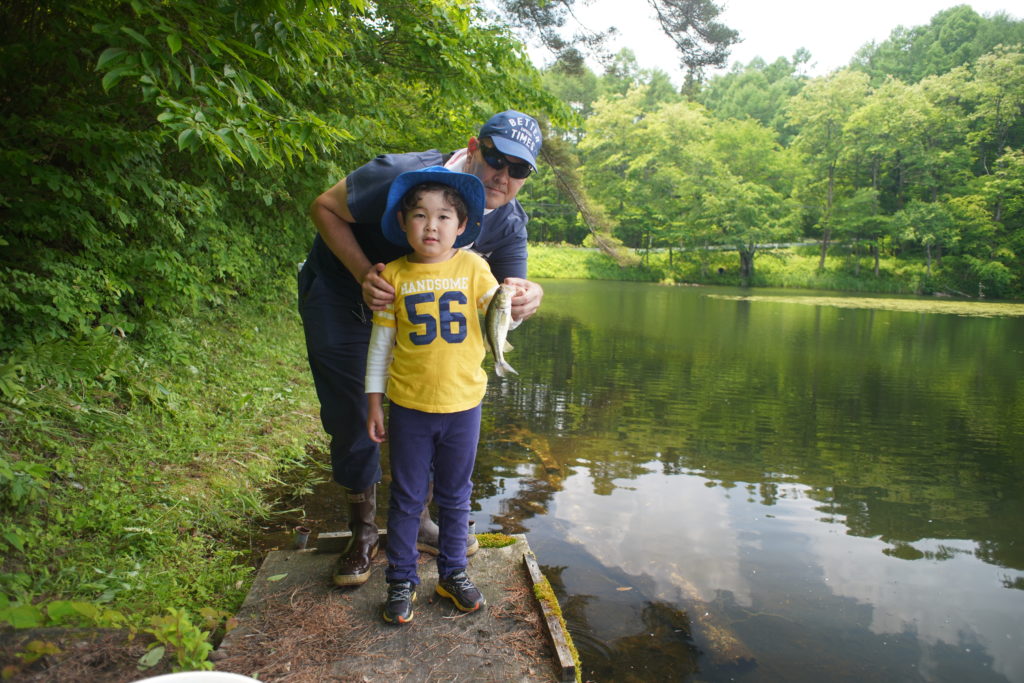
After all those Fred Hall Shows I’d attended and knew what awaited me, because I’d never gone to this show before, this time I had no idea where to go.
I saw a large line to the right so I decided to go left and walk along the side of the building. The boats here are of different sizes with most being able to break down to fit into the small KEI trucks that are so popular in Japan. Next to the boats was a children’s slack line and rock wall. I luckily ate before we arrived, as the food stalls would have taken all my money before seeing the show’s contents.
One corner was filled with fishing tanks; just up my alley. The largest was filled with large trout swimming around just waiting for that baited hook. There was a small admission fee of just about $3 to fish and take home up to two fish. Unfortunately, it was only for women and children.
As part of our April trout opening preview (which as you’ll see later, was delayed due to the COVID-19 pandemic), we ran an excerpt from author John Gierach’s book,
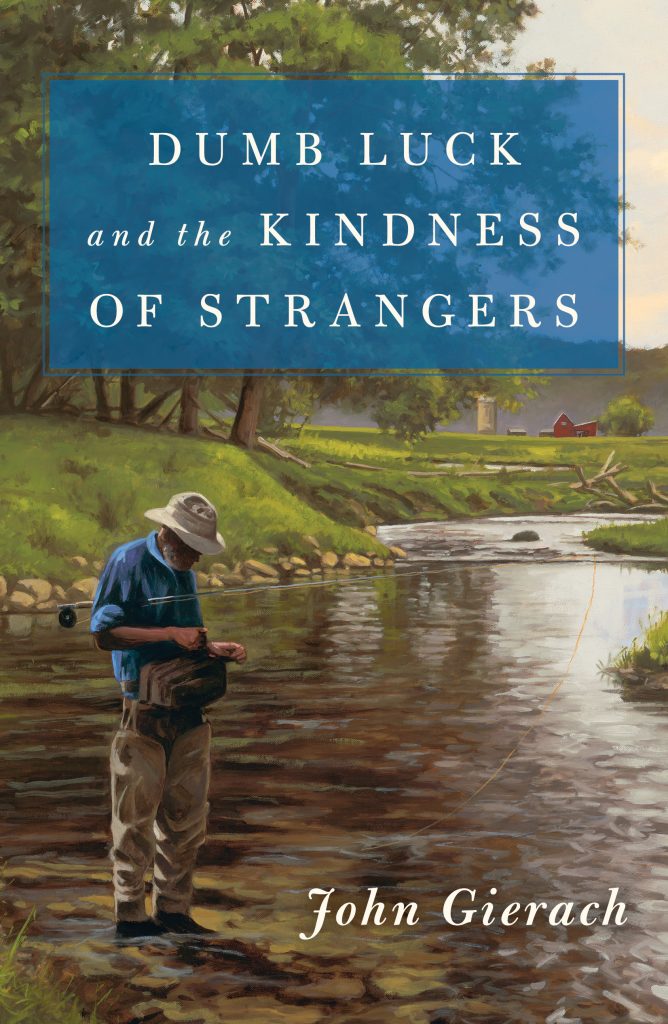
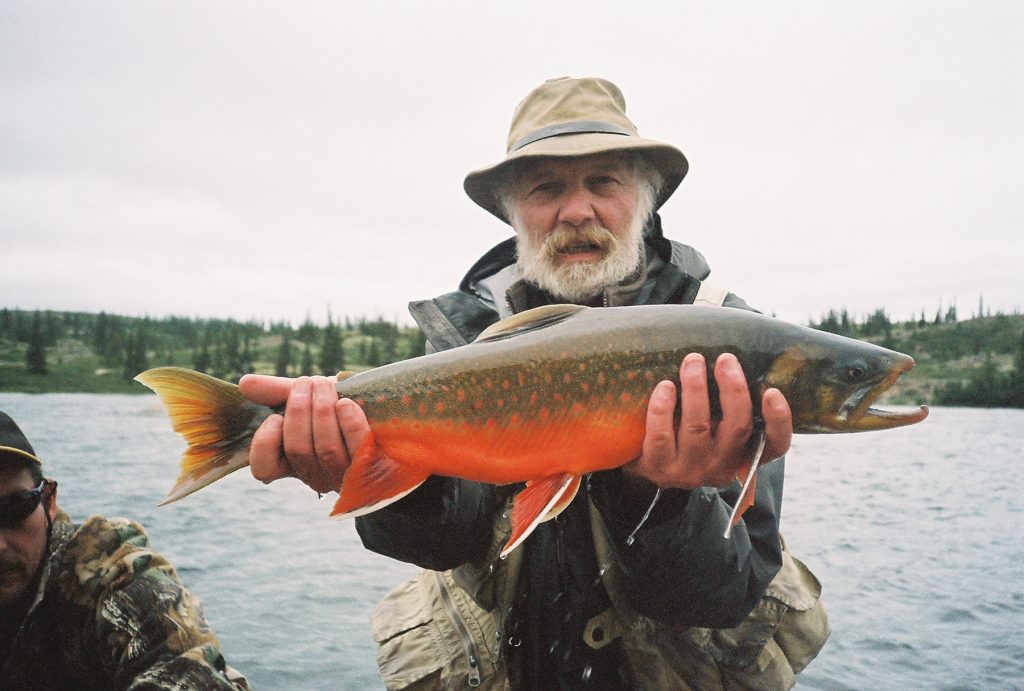
The lake was crowded in the third week of March. Six weeks earlier flash flooding had washed out roads and bridges, and the Paiute Tribe had closed the lake in the middle of fishing season. Pyramid Lake sits in the Nevada desert and it’s in a bowl formed by four mountain ranges that concentrate the heat like a Dutch oven, so there’s no fishing during the hot months when shallow-water temperatures reach or exceed the trout’s upper avoidance level and the fish retreat to the depths where they’d be out of range of anything short of downriggers anyway.
I’d given up on the trip when Rob called to say that a small part of the lake had reopened – about 30 percent of what you can normally fish – so I booked a flight and hurried out. I didn’t foresee that everyone else who’d been champing at the bit would do the same and that we’d all be squeezed together into a relatively short stretch of shoreline. It wasn’t the first time eagerness has clouded my judgment.
Scott Haugen’s From Field to Fire column usually delivers the goods on how-to stories, and his May story on Golden State pig hunting (plus a delicious recipe from Tiffany Haugen) was no exception.
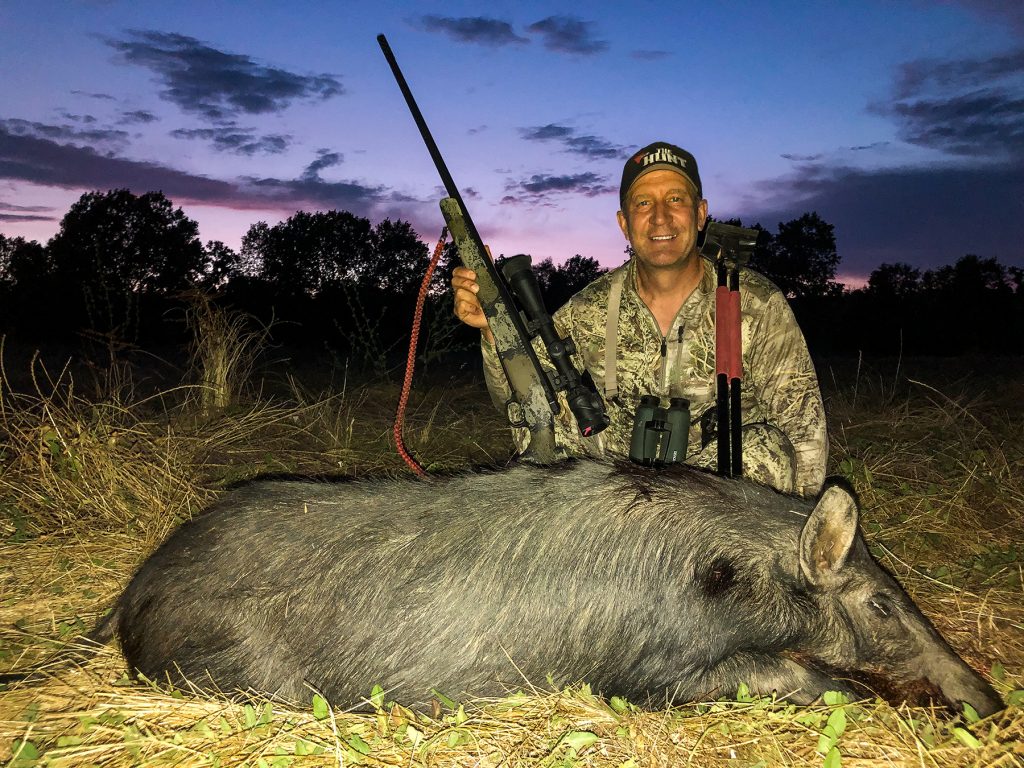
While my favorite time to pig hunt is in the evening, Cremeans likes morning hunting too, and he advises people not to give up too soon.
“We see a lot of pigs up until 11 a.m. They’ll often feed early in the morning, wallow and then go back to feeding,” he says. “As long as there’s water, pigs can be active during all but the hottest part of the day.”
Last spring I hunted with Cremeans and we saw over 150 pigs a day. We watched a giant boar that I never got a shot at, but I came away with a pig that was great eating. I still have a tag in my pocket and look to hunt with Cremeans again, in June. His pigs hunts go through July, making them the perfect opportunity for all hunters, whether you’re a beginner looking to build hunting skills or an experienced hunter looking for some delicious meat.
As stated earlier, the people of the Eastern Sierra, who depend so much on the trout opener and the thousands of visitors who flock to the lakes and rivers, was postponed until almost summer. We caught up with Jeff Simpson of the Mono County Economic Development Department in Mammoth Lake, who told us about the strange scene on what should have been a rollicking party.
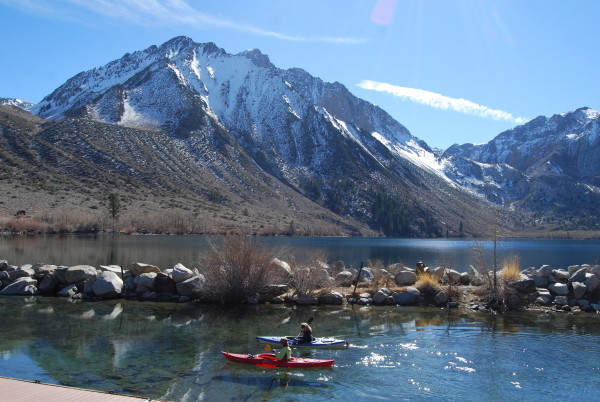
Throughout the winter, April 25 was circled on calendars inside and outside the Eastern Sierra. Any day that’s referred to as “Fishmas” is reason to celebrate. So imagine waking up that day with no place to go, no visitors to welcome and, worst of all, no fish to catch. The threat of COVID-19 spreading convinced officials in three Sierra counties to postpone the traditional state trout opener. It was indeed a melancholy mood around Mono, Inyo and Alpine Counties when the sun rose that day. .
“The weather was just perfect. And I was thinking this would have been the best opener in so many years,” says Jeff Simpson, an avid angler born and raised in Mono County who works for the Mono County Economic Development Department in Mammoth Lakes.
“I know we’re postponing it and we’ll have a rebooted Fishmas, part two here. But just to have that date come and go without seeing the towns busy again and the businesses open was difficult.”
Simpson and the rest of the Eastern Sierra finally got its chance to break out the fishing rods later in the spring.
“I counted 10 boats when we got on the water around 6:30 and there were 25 boats on when we got off the water at like 11,” local angler Jeff Simpson says of his experience at Bridgeport Reservoir. “Usually we’ll have a couple hundred on the water.”
But given that the Eastern Sierra is still limited due to the statewide COVID-19 shutdown and the quick announcement that the trout opener, which was delayed from its usual last Saturday in April start, the lack of angling pressure was understandable.
“For the most part, though, it was just locals. I think the quick decision by the state didn’t allow for a lot of people to plan ahead,” says Simpson of the Mono County Economic Development Department in Mammoth Lakes. “Most people out on the water were either locals or drive-ins from Nevada – within a couple hour radius.”
Just before the pandemic all but shut down the world, editor Chris Cocoles and some friends went to the Big Island of Hawaii and went deep-sea fishing with Ohana Fishing Adventures. They didn’t catch anything that day, but spending time with owner Dave Van De Car and hearing his story was inspiring.
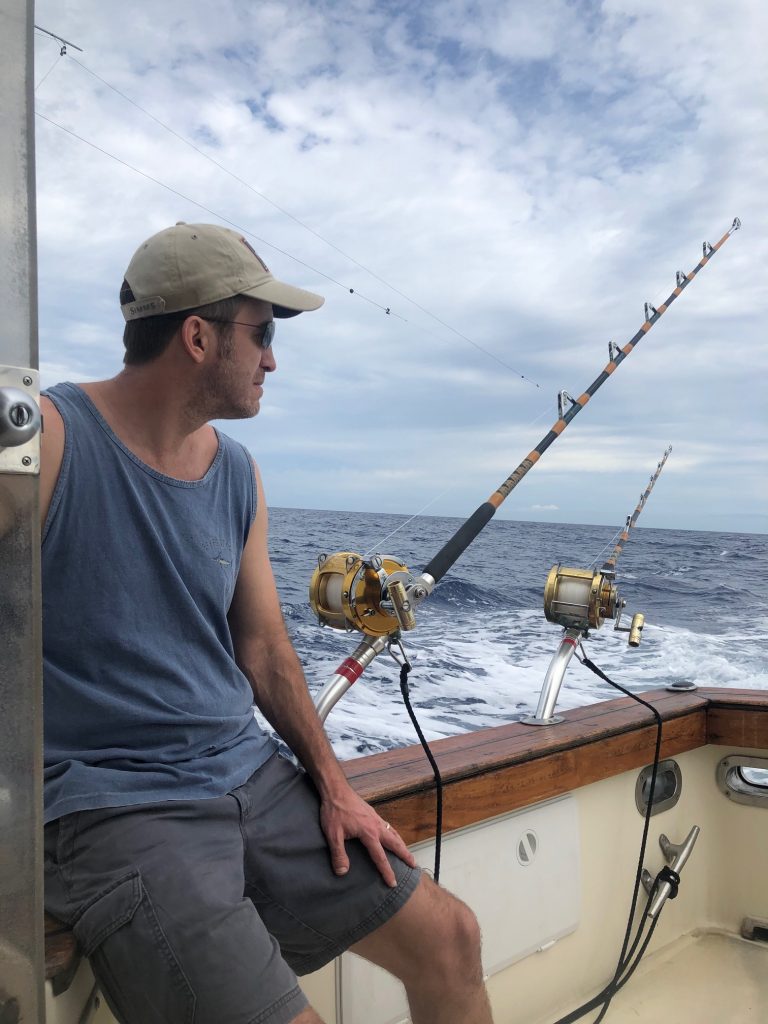
Van De Car uses the word “corny” to describe his love for helping people early on in his job. Customer service was a natural for him (the trait will serve him well in his current profession).
“It was gratifying,” he says of the comfort level that came with reassuring vulnerable clients that their repairs or medical bills would be taken care of.
“The insurance companies I worked for had to make business decisions to cut costs and unfortunately, most of those decisions were to the detriment of the customer and to the adjuster.”
“Also, the customers themselves became harder to please,” he adds.
Disillusioned enough to walk away from his successful progression, he spent three years as a construction supervisor for a restoration company, but that wasn’t the answer either.
“Valerie was also up for a new challenge and we had a few negative experiences with fishing charters here in Hawaii when we had come out to visit my dad (who had relocated to the Big Island). Those experiences had nothing to do with catching fish; it was more so that the captains did not communicate with us and did not really follow through on things promised on their websites,” he says.
“Valerie and I are both service- oriented people and after a particularly bad charter experience, we talked ourselves into moving out here and running a charter.”
We had a Hawaii theme in our June issue, as we talked to Deadliest Catch crabbing boat skipper Josh Harris, who went to the Big Island to following in his late father Phil’s quest to fish these sacred waters.
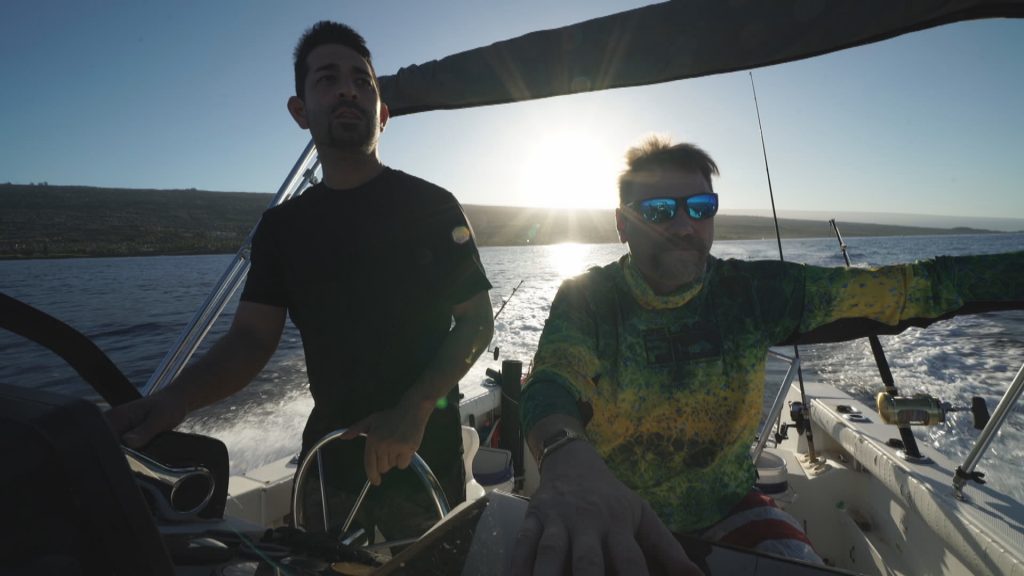
Wherever Josh Harris goes, it seems that his dad is watching. Phil’s face adorns the wheelhouse on the Cornelia Marie, the same area where he collapsed. That isn’t lost on Josh – Phil’s younger son Jake also fished with him but has since endured drug addiction and jail time – whether he’s captaining that same boat in the Bering Sea and now in a much smaller craft off the Kona coast.
Josh admits to being disappointed Phil never was able to meet his granddaughter, but you can bet he feels his presence relentlessly.
“Every day I go into the wheelhouse and think about him. We kept a lot of stuff on the boat that he had in there. Anytime I do some kind of fishing activity or look at my daughter, I think of my dad,” Josh says.
Phil’s three main intentions during his Hawaii days included making money, meeting women and finding a stiff drink (one of the charts included the phrase “lots of good bars”). Josh might have the same motivation as he explores the Big Island more. (“I never get tired of bringing the boat in at the end of the day, putting it on the trailer and seeing girls in bikinis washing their Sea-Doo or their boat.”)
And the thought of starting a commercial fishing business there will at least send Harris back to Kona after getting a taste of it. Like any good fisherman, Phil left the bait on the hook for his son to snap it up.
Our friend Nancy Rodriguez contributed a great July piece on golden trout fishing in the Sierra backcountry. Nancy made a promise to her dad that was focused on achieving with her husband Joe.
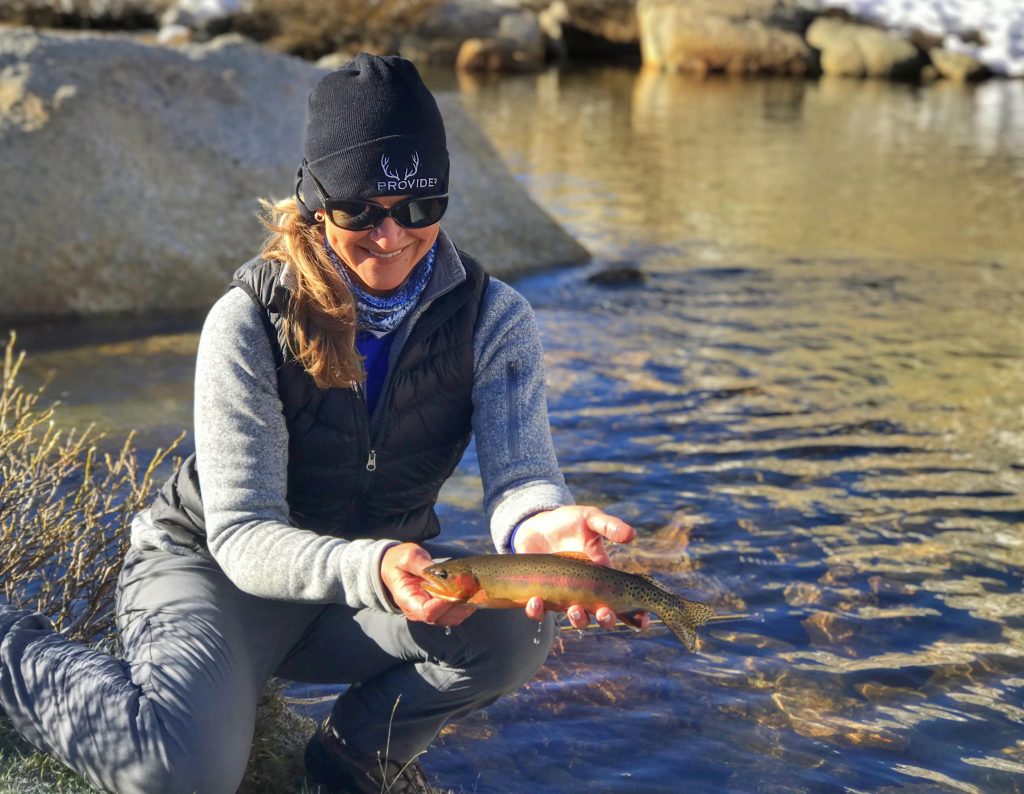
My 4-pound test ripped deeper into the icy depths as I kept steady tension on the line so my barbless hook wouldn’t free itself. My heart was exploding with excitement as the fish and I danced in the morning light. Leading and following, I cautiously brought the fish to shore.
I bent down and gently slid my wet hand under its belly and brought it into a world it had probably never seen. A tear rolled down my cheek as I whispered, “This is for you, Dad.”
The beauty of this fish was like no other. It shimmered in a suit of gold and contrasting spots, with a blaze- red lateral line sparkling on silky skin. The glow from the fish and disbelief in my eyes must have certainly resembled an intrepid miner when the first gold nugget revealed itself in a worn and weary pan.
Indeed, after a lifetime of wondering, I held gold in my hands. After a quick moment of admiration and a few words of gratitude, I gently released the golden back into its underwater world. I knew that memory would never leave me. …
…After years of waiting, I was finally able to show Dad the photo of “our” first golden.
“You finally caught a golden trout!” he exclaimed with a smile and wide glowing eyes. “That’s fantastic, Sweetie! You just made my day.”
And that moment made mine.
The editor celebrated his Sept. 5 birthday with his family in a cabin in the Sierra near Arnold. While a fishing trip to nearby White Pines Lake didn’t turn out with any trout, the wildfires that were burning and would get worse in the state later in the fall weighed on him deeply.
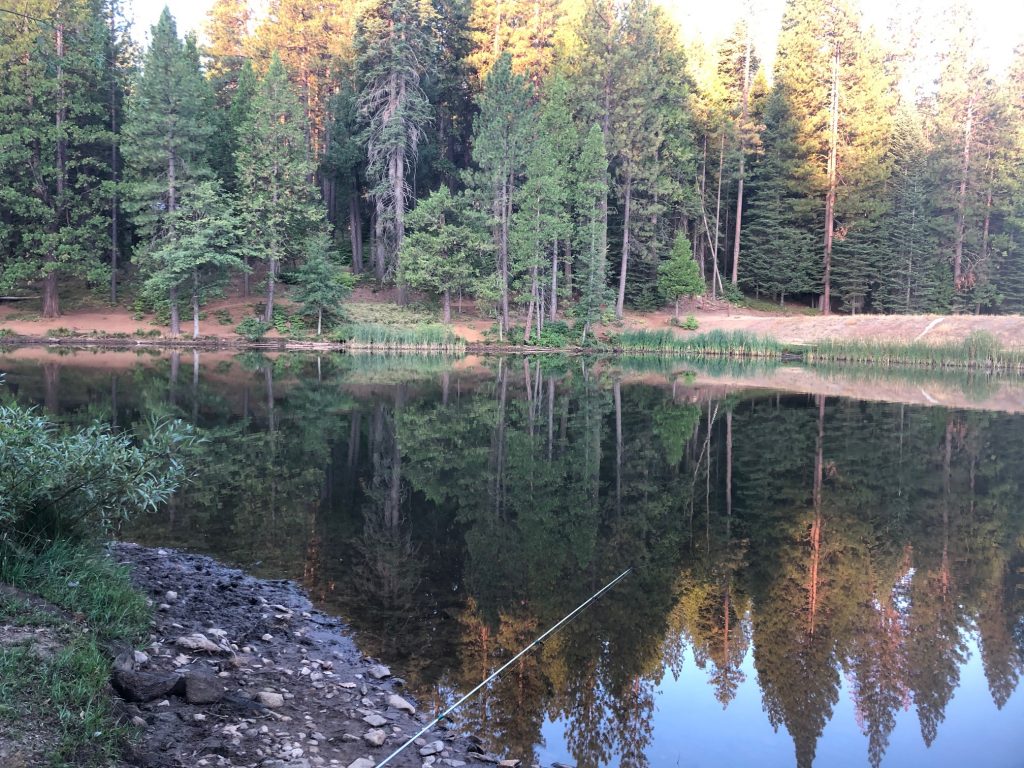
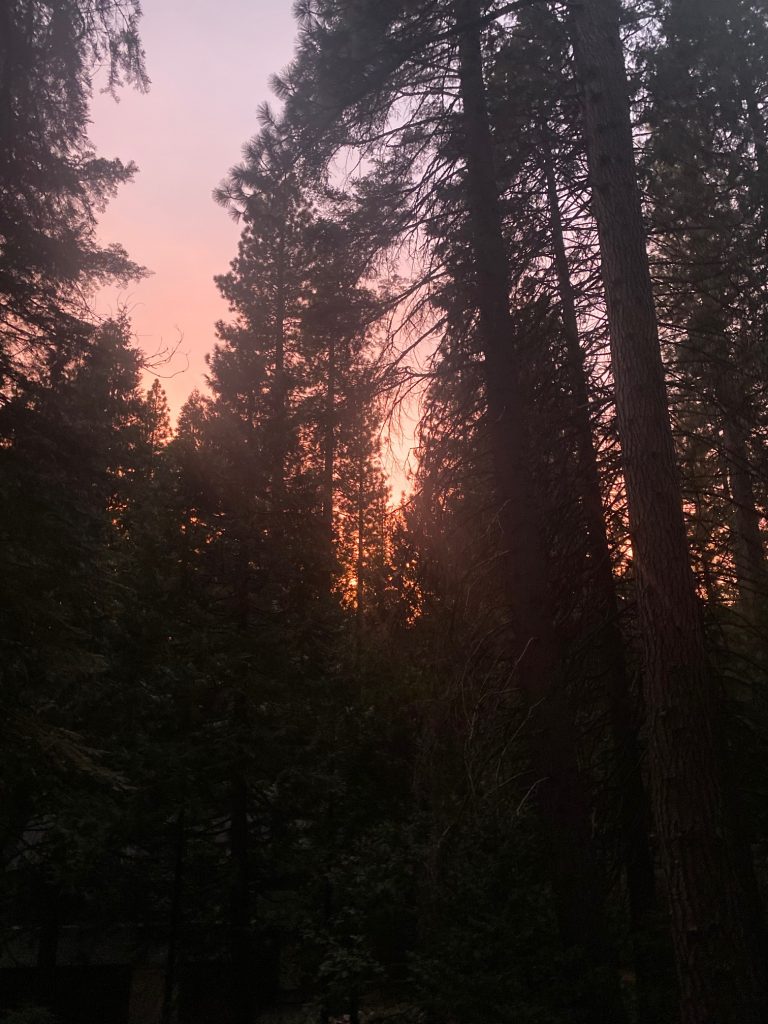
It turned out to be a nice morning at White Pines Lake. It didn’t matter that nobody who showed up that day was catching any trout – a father and his kids did reel up a bluegill, so that brought a smile to my face. But it was time to go. Hunger, the increasing heat and the plan to take a dip in a nearby swimming pond near our cabin chased us away from the lake.
It just happened to be my birthday, so on the recommendation by our cabin rental hosts, we stopped at the Red Apple bakery between Arnold and Murphys and picked up a mixed berry pie to celebrate that night.
The rest of the weekend we mostly hung around the cabin, drinking beer and wine, grilling, eating pie and dodging the pine cone dive bombers falling from those big trees towering above us.
The air was smoky, conditions that seemingly everyone in California and the West Coast endured throughout September. You can bet my family and I talked frequently that with all these trees we were fortunate that this community wasn’t enduring the wrath of these wildfires throughout our home state.
I can’t help but remember the good times at Shaver and Oroville I had and weep for the bad times that the locals are still suffering through.
Brandon Honig of the USFWS wraps up our look back with a December feature on the resurgence of Clear Creek salmon.
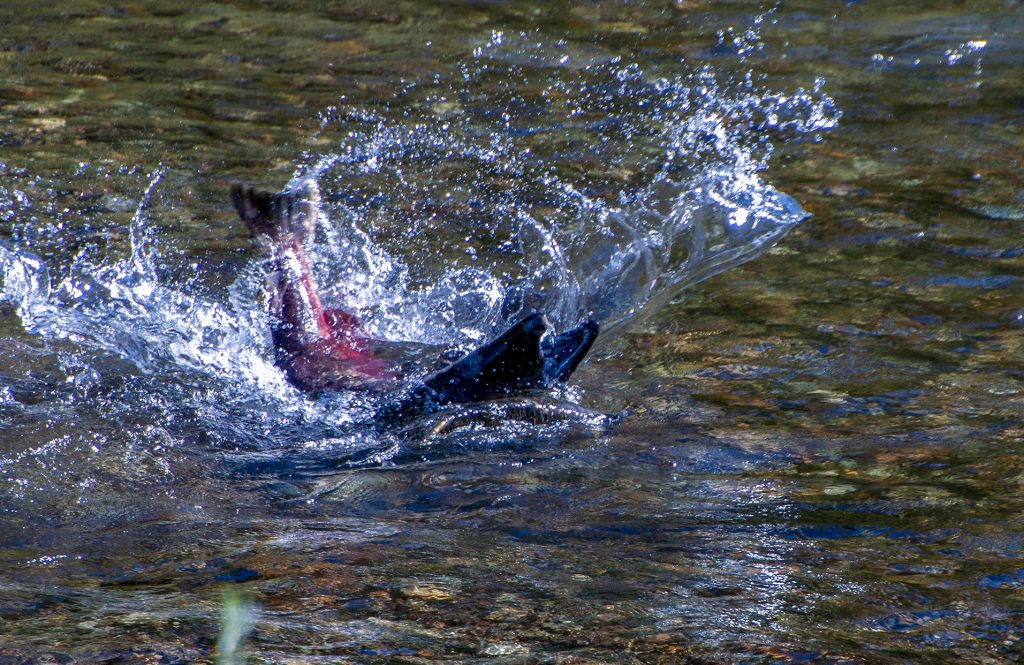
“I’m proud of the work that came before me and the perseverance they showed,” said Chamberlain, who has worked on the project since 2015. “People aren’t always resilient enough to insist that ‘There’s a great opportunity here,’ even when the naysayers can’t see it. A vision was implemented here, and it’s working.”
In addition to USFWS, BOR and the state, the project received significant contributions from National Oceanic and Atmospheric Administration’s Fisheries Service, the National Park Service, California Department of Water Resources, the Yurok Tribe and a variety of local organizations, including the Western Shasta Resource Conservation District. The experience often felt like a marriage, Bratcher said.
“Sometimes it drives you crazy, but you love the place, so you work through the problems and will be stronger for it,” she said. “We’ve had some really good people, some really knowledgeable people, who have continued to stick it out and really love Clear Creek.”
Also like a marriage, she said, the commitment to Clear Creek should be eternal.
“I’d hate for people to say, ‘We’re done on Clear Creek,’” Bratcher said. “Any time you implement a change, it disrupts the patterns and you have a responsibility. You are beholden to watch over it and be a steward.”
We hope you enjoy this look back at 2020, and while there were some great stories, 2021 can’t get here soon enough!



